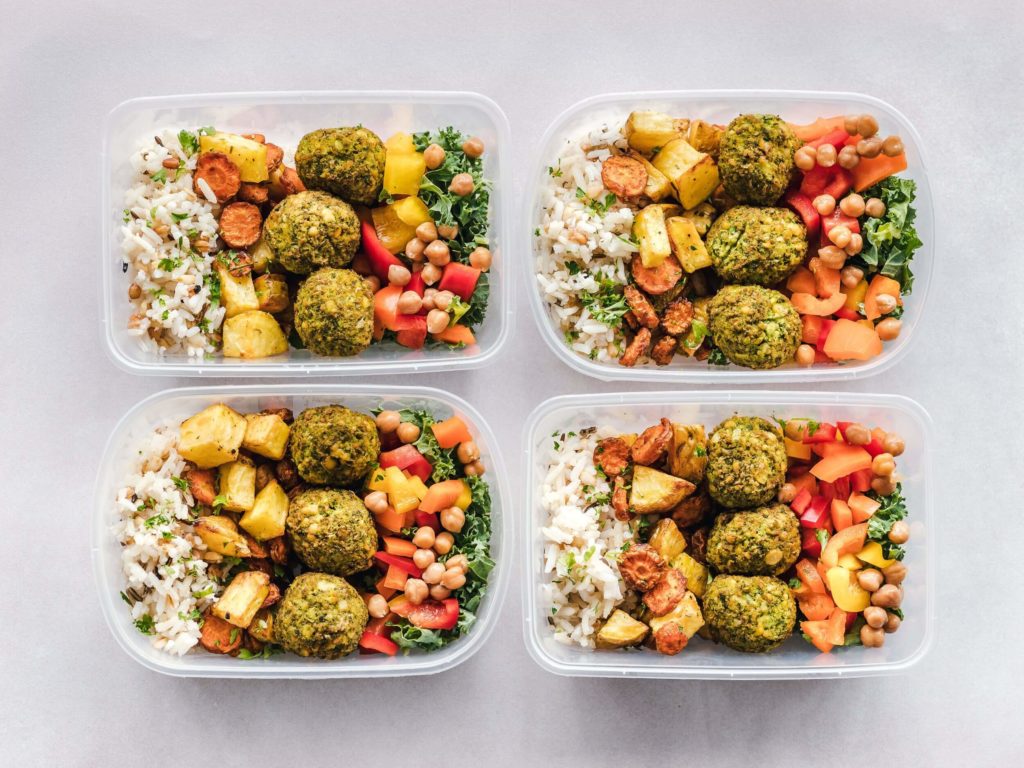If trying to eat healthy seems more complicated than ever, you’re not alone. With dozens of diets and nutritional plans claiming significant health benefits, choosing the right one can be overwhelming.
However, it’s important to remember that nutritional needs can differ based on a variety of factors including age, genetic variation, pre-existing health conditions or fitness goals. Just because one friend swears by the paleo diet, your body may respond best to a plant-based approach, or vice-versa. To cut through the fat, use these five tips to help navigate today’s dietary minefield and fuel up for success.

Make a Plan
When life gets stressful, many people turn to fast food, fatty snacks and sugary drinks. The reason for this indulgence is simple––food makes us feel better. During stressful times, the brain craves carbohydrates because eating carbs increases the production of serotonin, the neurochemical that makes you feel good. While the brain may enjoy that short-term satisfaction, eating poorly can eventually lead to negative long-term health outcomes including diabetes, heart disease and obesity.
Creating a nutrition plan will help you ward off unhealthy cravings by holding yourself accountable and not falling into bad habits. Eating healthy for a day is easy, but staying on track for a week, a month, and beyond takes good planning and serious discipline.
The first step is to set both long-term and short-term goals for yourself. The long-term goal is something you want to achieve, such as losing 10 pounds or reducing your blood pressure. The short-term goal is the immediate changes you’ll implement to reach that milestone, such as cutting out fast food or eating more fruits and vegetables.
Remember to quantify these goals so that they’re trackable, and it’s easier to hold yourself accountable. Once a plan is in place, you’ll want to ensure you’re logging your weekly nutritional habits. Logging your short-term weekly progress not only keeps you accountable to your plan, but also shows whether you are on target to reach your long-term goal, or whether your dietary plan needs some readjustment.
Action Plan: Set a long-term health goal and then make a daily and weekly nutrition plan to get you there. Log your progress and stay on track.

Fundamentals of Nutrition
Planning is important, but first, you need to understand how nutrition affects your overall health. While everyone’s body chemistry is unique, there are a few basic principles to understand.
Nutrients can be divided into two categories––macronutrients and micronutrients. Our bodies require large amounts of macronutrients, which provide our body with energy in the form of carbohydrates, proteins, and fats. Macros make up the bulk of the nutrition in food and are the building blocks of our muscles and tissue. Most people get plenty of macronutrients in their regular diets and often intake far more than they need––leading to adverse side effects such as being overweight or obese.
On the flip side, your body requires small amounts of vitamins and minerals that are collectively known as micronutrients. These can be divided into four different sub-categories including water-soluble vitamins, fat-soluble vitamins, micro-minerals, and trace minerals. Unfortunately, many people forget about micronutrients and end up being nutrient deficient in several categories. While supplements and multivitamins can help prevent major deficiencies, it’s best to get your nutrients from your food. Beyond eating a balanced diet of fruits, vegetables, grains, proteins and healthy fats; a simple rule of thumb is to “eat a rainbow.” This means consuming a colourful range of nutrient-dense foods in reds, yellows, greens, and orange.
Action Plan: Don’t overdo your macronutrients, but make sure to fulfil your micronutrient needs by eating a healthy and colourful range of fruits, vegetables, proteins, fats, and grains.

High-Quality Meat, Organic Fruits and Veggies
It’s not always about how much you eat, but rather what you eat. While a combo meal at the local drive-thru may satisfy your hunger, you’ll pay a price. Fast food is loaded with carbs but is low in fibre, causing your blood sugar to spike before inevitably crashing and leaving you exhausted. Not to mention, intaking high amounts of sodium can lead to water retention, which helps explain why you’re left with that unwanted bloat. Swap out fast food for a nutrient-dense salad with lean protein, and you’ll notice your body responds with better energy, stronger immunity, and more balanced mental health.
Ensure you’re consuming a nutrient-dense diet consisting of high-quality food including organic fruits and vegetables, grass-fed meat and wild-caught seafood. While organic foods are not always available or affordable, they offer several benefits including the elimination of pesticides or antibiotics––which studies show can have a negative impact on your overall health. Beyond being cleaner, studies have shown evidence that organic fruits and vegetables are more nutrient-dense, with more healthy fats and protective antioxidants. When in doubt, use the “dirty dozen” list to determine the most important fruits and vegetables to purchase organic.
It’s also important to choose carefully when it comes to your meat. While factory-farmed beef, chicken, poultry, and seafood is cheaper, you’re getting lower quality protein. With the animals pumped up with antibiotics and hormones, consuming this meat has been shown to have a negative impact on our long-term health. And when it comes to farm-raised salmon, you are consuming a double-trouble combination of lower nutritional content and potentially unsafe pollutants and antibiotics. Organic and free-range proteins cost more, but their nutritional benefit is worth the price.
Action Plan: Clean fuel is good fuel. Buy organic and keep harmful pesticides and antibiotics out of your system.

Hydrate, Hydrate, Hydrate
It’s not just about what you eat, it’s also about what you drink. It may sound simple, but drinking enough water daily is one of the most effective ways to stay happy and healthy.
Experts recommend that men drink roughly 16 cups of water each day (3.8 litres), while women should drink at least 12 cups daily (2.8 litres). There are many health benefits to staying properly hydrated including regulating body temperature, lubricating joints, preventing infections, increasing organ function, and also better quality sleep, cognition, and mood.
Just stay away from high-calorie, high-sugar drinks like sodas or artificially flavoured juices. Not only is the added sugar bad for our overall health, but you’re likely to be drinking less water because you are now “hydrating” with soda. If the flavour is what you’re after, add a lemon wedge or cucumber slice to your water for a refreshing kick to your H2O.
Action Plan: Drink 12-16 cups of water each day and leave the sugary drinks in the can. It helps to set “hydration alarms” on your phone––one around mid-morning and another around mid-afternoon––that’ll remind you to keep drinking water.

Adjust Your Diet Based on Your Body’s Needs
There is no shortage of information out there about the supposed nutritional benefits of various diets. But switch the search terms and you’re just as likely to find countless articles “exposing” these diets as unhealthy and potentially even harmful to your health.
So how can a person make sense of all this conflicting information? That’s simple: Listen to your own body.
Everybody has a unique genetic makeup that’s directly responsible for our metabolism, vitamin absorption, risk of obesity, taste, and more. For example, one person may love Brussels sprouts while someone else can’t stand them––all because of those two individuals’ differing genetic compositions. The same concept applies to our body types and can explain why certain diets work for some people, but not for others. The best source of information for finding the optimal diet for you is your own body––pay attention to it.
If you do want to start following a set diet but aren’t sure where to start, the Mediterranean diet is a safe bet. Not only is it consistently recommended as one of the best diets for your overall health, but it adheres to rather basic principles of nutrition––a diet low in red meat, sugar and saturated fat, while high in produce, nuts and lean meat, such as seafood.
Action Plan: Begin paying closer attention to how your body reacts to certain foods and write them down. After a month, try to focus on eating more of the foods that your body responds well to, and reduce or eliminate foods that have a negative impact. When in doubt, try the Mediterranean diet.
If you’re serious about improving your health and reaping the benefits of more energy, improved cognition, stronger bones, better heart health, and even a reduced cancer risk––eating healthy is the first step. While the internet offers an overwhelming amount of information about eating healthy, don’t get caught up in complicated diets that aren’t sustainable. Instead, focus on following the basic principles of nutrition, eating highly nutritious and organic foods, staying hydrated and listening to your body. That’s the recipe for a lifetime of healthy eating.








